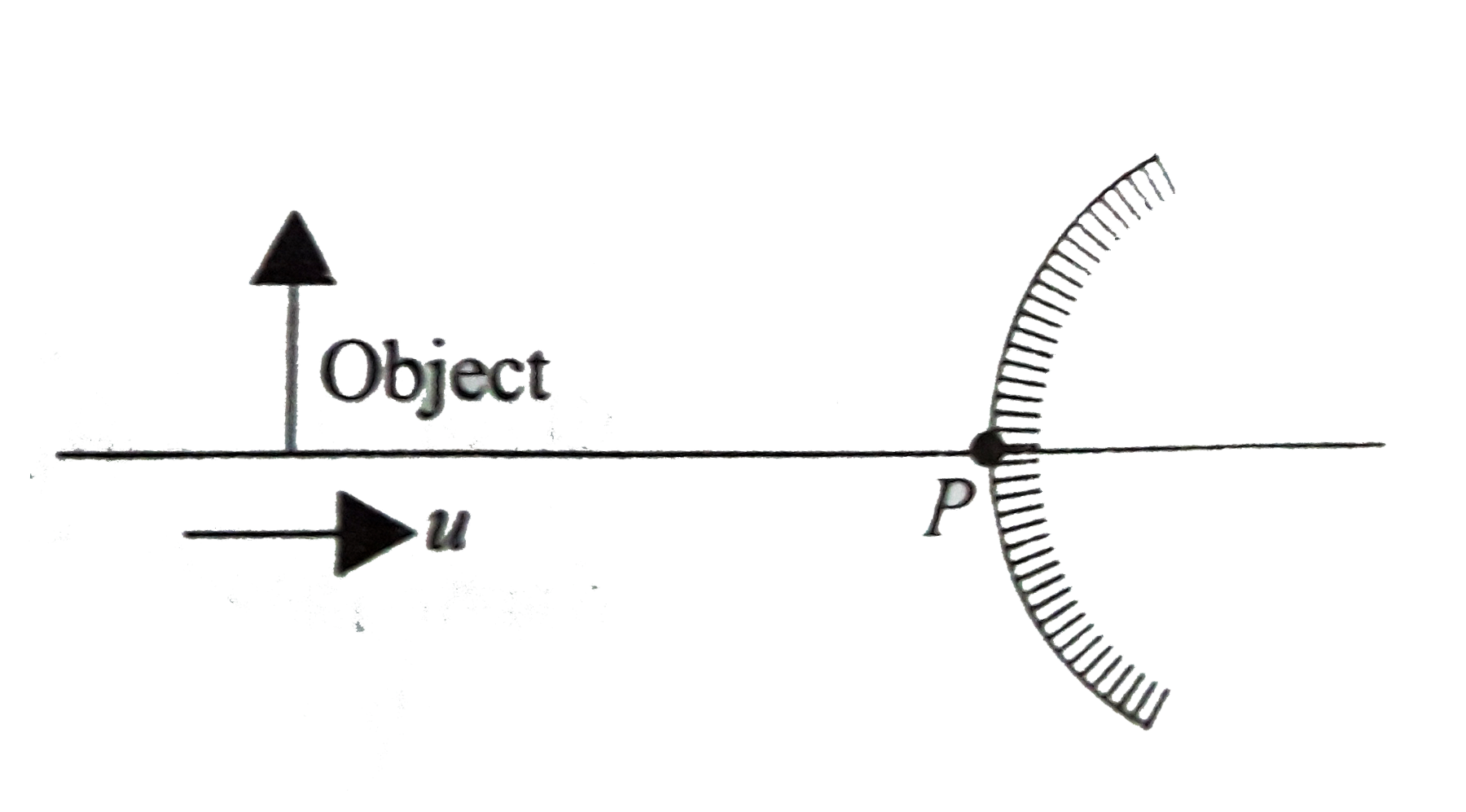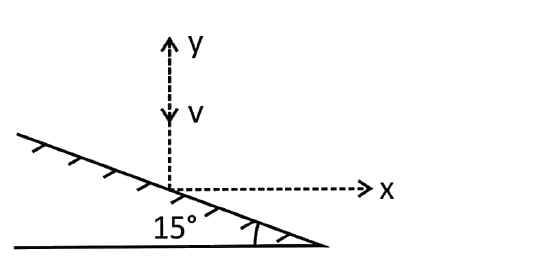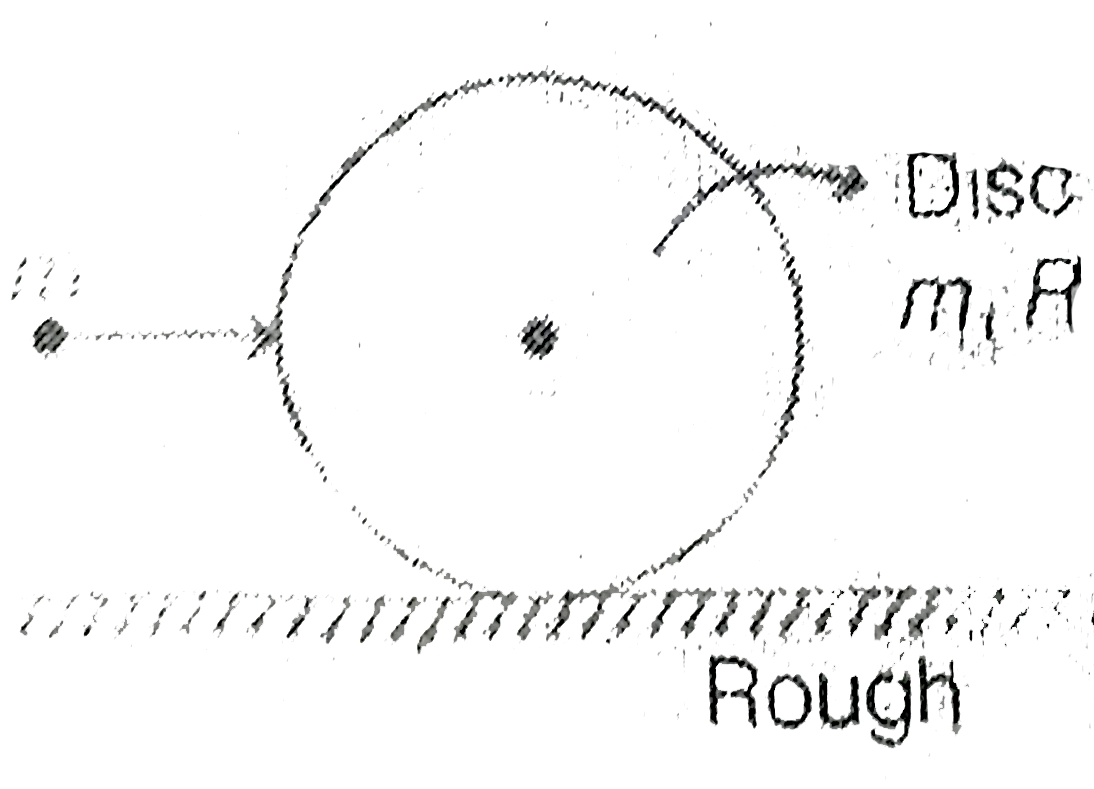A small block of mass m and a concave mirror of radius R fitted with a stand, lie on la smooth horizontal table with a separation d between them. The mirror together with its stand has a mass m. The block is pushed at t=0 towards the mirror so that it starts moving towards the mirror at a constant speed V and collides with it. The collides is perfectly elastic. Find the velocity of the image (a) at a time t<d/V (b) at a time t>d/V.
−R2V[2(d−Vt)−R]2,V[1+R2[2(Vt−d)−R]2]
R2V[2(d+Vt)+R]2,V[1+R22[Vt−d−R]2]
−R2V[2(d−Vt)+R]2,V[1−R2[2(Vt−d)+R]2]
−R2V[(d−Vt)−R]2,V[1−R2[2(Vt+d)−R]2]
The correct Answer is:A
Topper's Solved these Questions
- GEOMETRICAL OPTICSBOOK - AAKASH SERIESCHAPTER - GEOMETRICAL OPTICSEXERCISE - LECTURE SHEET (EXERCISE I LEVEL -II (ADVANCED) MORETHAN CORRECT ANSWER TYPE QUESTIONS)
3 Videos
- GEOMETRICAL OPTICSBOOK - AAKASH SERIESCHAPTER - GEOMETRICAL OPTICSEXERCISE - LECTURE SHEET (EXERCISE I LEVEL -II (ADVANCED) INTEGER TYPE QUESTIONS)
2 Videos
- GEOMETRICAL OPTICSBOOK - AAKASH SERIESCHAPTER - GEOMETRICAL OPTICSEXERCISE - ADDITIONAL PRACTICE EXERCISE (LEVEL-II PRACTICE SHEET (ADVANCED) INTEGER TYPE QUESTIONS)
6 Videos
- ELEMENTS OF VECTORSBOOK - AAKASH SERIESCHAPTER - ELEMENTS OF VECTORSEXERCISE - QUESTIONS FOR DESCRIPTIVE ANSWERS
9 Videos
- LAWS OF MOTIONBOOK - AAKASH SERIESCHAPTER - LAWS OF MOTIONEXERCISE - PRACTICE EXERCISE
98 Videos
Similar Questions
A small block of mass m and a concave mirror of radius R fitted with a stand lie on a smooth horizontal table with a separation d between them. The mirror together with its stand has a mass m. The block is pushed at t = 0 towards the mirror so that it starts moving towards the mirror at a constant speed V and collides with it. The collision is perfectly elastic. Find the velocity of the image (a) at a time t<dV, (b) at a time t>dV.
View SolutionA small block of mass m and a concave mirror of radius R fitted with a stand lie on a smooth horizontal table with a separation d between them. The mirror together with its stand has a mass m. The block is pushed at t = 0 towards the mirror so that it starts moving towards the mirror at a constant speed V and collides with it. The collision is perfectly elastic. Find the velocity of the image (a) at a time t<dV, (b) at a time t>dV.
View Solution
Knowledge Check
A point object P moves towards a convex mirror with a constant speed V, along its optic axis,. The speed of the image
Ais always < VBmay be >, = or < V depending on the position of P. .Cincrease as P comes closer to the mirrorDdecrease as P comes closer to the mirrorA Point object P moves towards a convex mirror with a constant speed V, along its optic axis. The speed of the image
Ais always <VBmay be ≥ or <V depending on the position of PCincreases as P comes clser to the mirrorDdecreases as P comes closer to the mirrorAn object is moving towards a convex mirror with a constant velocity. P is the pole of mirror.
 Amagnification of the image increases with time.Bmagnificatin of the image decreases with timeCvelocity of the image increases with timeDvelocity of the image decreases with time
Amagnification of the image increases with time.Bmagnificatin of the image decreases with timeCvelocity of the image increases with timeDvelocity of the image decreases with time
An object is moving towards a convex mirror with a constant velocity. P is the pole of mirror.

View SolutionAn object is moving towards a mirror with a velocity of 10ms−1 as shown in the figure. If the collision between the mirror and the object is perfectly elastic, then the velocity of the image after collision with mirror in vector form is

View SolutionAn object is moving towards a mirror with a velocity of 10ms−1 as shown in the figure. If the collision between the mirror and the object is perfectly elastic, then the velocity of the image after collision with mirror in vector form is

View SolutionA point object P moves towards a convex mirror with a constant speed v, along its optic axis.The speed of the image
View SolutionA point mass m collides with a disc of mass m and radius R resting on a rough horizontal surface as shown . Its collision is perfectly elastic. Find angular velocity of the disc after pure rolling starts

View Solution
